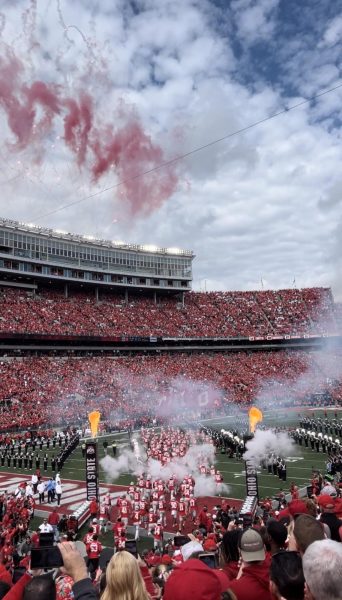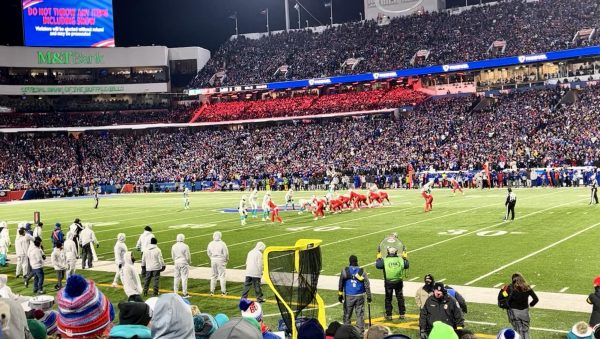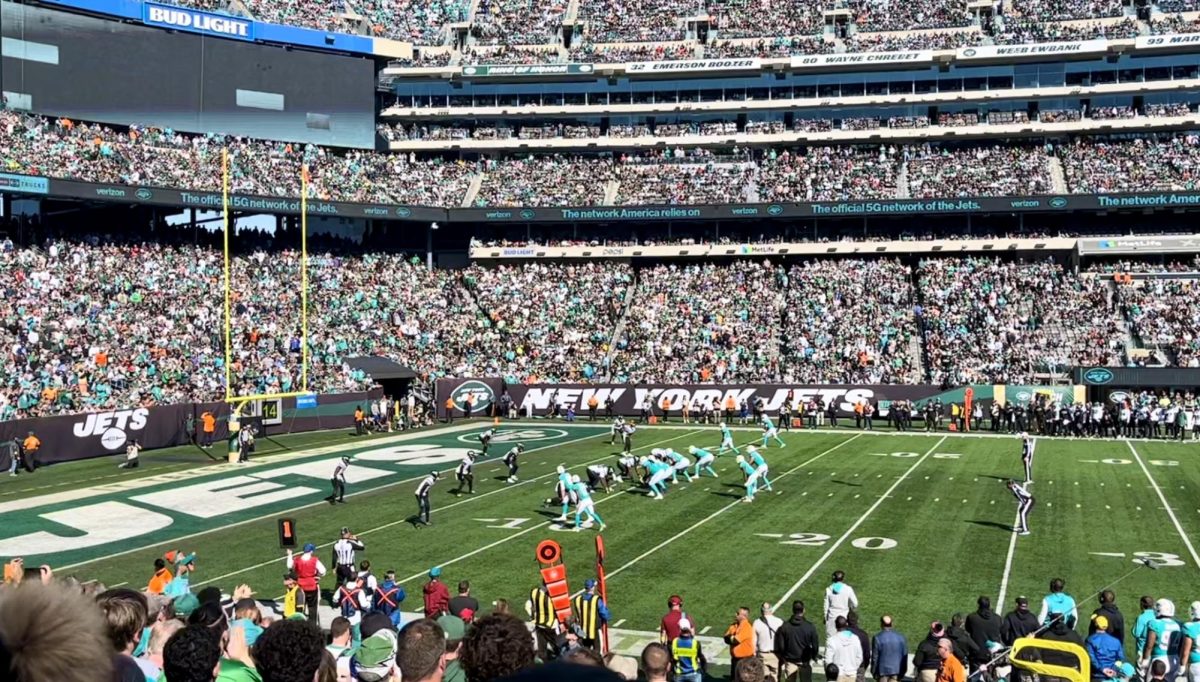One of the major arguments in football is which organization is better: College football (NCAAF) or the NFL? Each playoff format is completely different. Their stadium atmospheres are incomparable, and the talent difference between players is vast. As the debate rages on, one thing is evident: the National Football League and Division I College Football are becoming more and more similar by the year.
College football and the NFL have their respective pros and cons. A heavily criticized four-team playoff format has haunted college football since 2014. Meanwhile, the fan culture and stadium atmospheres within the NFL find disapproval from many people for its lack of an electric environment, compared to college football. The National Football League hosts a well respected fourteen-team playoff, giving a large variety of teams opportunities to succeed. Understandably, the NCAAF and NFL are complete opposites when it comes to their organizations’ pros and cons.
The four-team college football playoff has been scrutinized for years. The same college football powerhouses dominate it, with a couple of surprise teams every few years. Teams such as the Alabama Crimson Tide, the Clemson Tigers, and the Ohio State Buckeyes are constantly in the playoffs, usually leaving room for only two underdog teams to make it. The College Football Playoff Committee selects and determines the rankings of the four teams who make the playoffs. This committee is made of one current athletic director from each Power Five conference — ACC, Big Ten, Big 12, Pac-12, and SEC. The main guideline to the committee members playoff selections goes as follows: ‘do not choose the most deserving, choose the best.’
In the past ten seasons, Alabama has participated in the college football playoffs eight times, Ohio State five times, and Clemson six times. There was an overlap between at least two of these three teams in seven of those seasons. There are 133 Division I Football teams. Every season, the majority of teams play with little to no hope of making the playoffs, let alone winning a national championship, because the chances are so slim.

This college football season, Florida State stood as a reminder of how corrupt this playoff system is. The Florida State Seminoles were undefeated, along with Michigan and Washington. All were the champions of their respective conferences. Despite this, only Michigan and Washington advanced to the playoffs.
When the college football playoff committee released this decision, they explained that the largest reason they left Florida State out was because their Quarterback Jordan Travis recently sustained a severe leg injury, ending his season. The committee did not believe Florida State could compete without him, which was a fair assumption, yet raises the question: Why did Florida State play the games at all? The Seminoles did everything they could to make the playoffs. They went undefeated, won their conference, and beat a variety of ranked teams. But because one player got injured, none of that effort mattered. This situation serves as a testament to how dishonorable the four team college football playoff system is.
For comparison, the playoff format of the National Football League is not as controversial to football fans. It holds fourteen teams, seven from each the AFC (American Football Conference) and the NFC (National Football Conference), the two conferences in the NFL. Each conference holds four divisions, which hold four teams each. The team in each division with the best record earns a home playoff game. The three other playoff spots in each conference are taken up by the teams with the best records who didn’t win their divisions. They each earn an away playoff game. It is worth noting that the team with the best record in each conference earns a bye week in the first round of the playoffs, automatically advancing to the second round. Since there are 32 teams in the NFL, nearly half the league competes in the postseason. This makes for an extremely competitive and exciting regular season, as there is opportunity for every team to make it out of the regular season.
Given the College Football playoff format is one of the most frowned upon aspects of the NCAAF, serious changes are being put in place. As of the upcoming 2024-2025 college football season, a twelve-team playoff will take over college football.
Just like the four team playoffs, the top twelve teams will be selected by the college football playoff committee. The top four teams will receive byes, and automatically advance out of the first round of playoff games. Here, the twelfth seed will play the fifth seed, the eleventh seed plays the sixth seed, the tenth seed plays the seventh seed, and the ninth seed plays the eigth seed. The lower seeds will host these games.
Many wished this playoff format was adapted this season, as there was such a large variety of deserving college teams. With that being said, it was not, and the sports world looks forward to the future implementation of this playoff format. When it is put into place, opportunities within college football will be greater, the playoff race will be more competitive, and the games will be more exciting.
One of the reasons that college football is so special is its unique fan culture and stadium atmosphere. There is no sports atmosphere quite like a primetime college football game. The top fifteen largest stadiums in America are all college football stadiums. In-stadium traditions completely elevate the atmosphere of college football games. Traditions like the Penn-State ‘White Out,’ Alabama ‘Dixieland Delight,’ Wisconsin ‘Jump Around, ‘and Ohio State’s ‘Scarlet Out’ are some of the most electric traditions in all of sports.
The NFL atmospheres simply do not compare. There are not a ton of in-stadium traditions, and stadiums are not nearly as large as college football stadiums. The fan bases are less extreme and passionate.
Despite the past two seasons, NFL atmospheres and fan bases have been upping their game. The Cincinnati Bengals have hosted a ‘White Out’ and a ‘Stripe The Jungle.’ These events featured sold-out stadiums of fans in all-white attire and fans in color-coordinated sections of the stadium, which ultimately created a black-and-white pattern throughout the stands. A variety of stadiums have included LED lights in night games, and the Minnesota Vikings have also begun hosting White Outs.

Clearly, National Football League teams and stadiums have been on the rise. In-stadium atmospheres have progressively become more and more exhilarating. No NFL stadium has quite reached the atmosphere of a relevant college football stadium, but some teams are sure working towards that feeling.
College football and the National Football League will never be identical, due to one important reason — the talent difference. Only 1.6% of NCAA football players go professional. NFL players make millions of dollars every year, whereas the majority of College Football players don’t make a dime from the sport. In an interview with SI.com’s Mike Fisher, University of Colorado Coach Deion Sanders addressed why he would never coach in the National Football League, rather college football. “I have a problem with men getting their checks and not doing their jobs,” he said.
There is a different dynamic within players from the two organizations that will never change. College football players are playing for nothing but their team, school culture, and the love of the game, while NFL players are motivated by distractions: money, fame, and status. While NIL deals, a process where star college football players earn revenue through deals with third-party brands, have recently become legal, they do not compare to salaries.
On top of the energetic players, college fanbases and school culture present fans with a genuine connection to their teams, as they represent the schools these fans go to, something that can’t be said about the NFL.
Regardless of these differences, each organization is growing more similar to the other by the year. The two are incorporating the better aspects that the other organization holds, and it is providing nothing but entertainment for the football world.
Understandably, the NCAAF and NFL are complete opposites when it comes to their organizations’ pros and cons.

